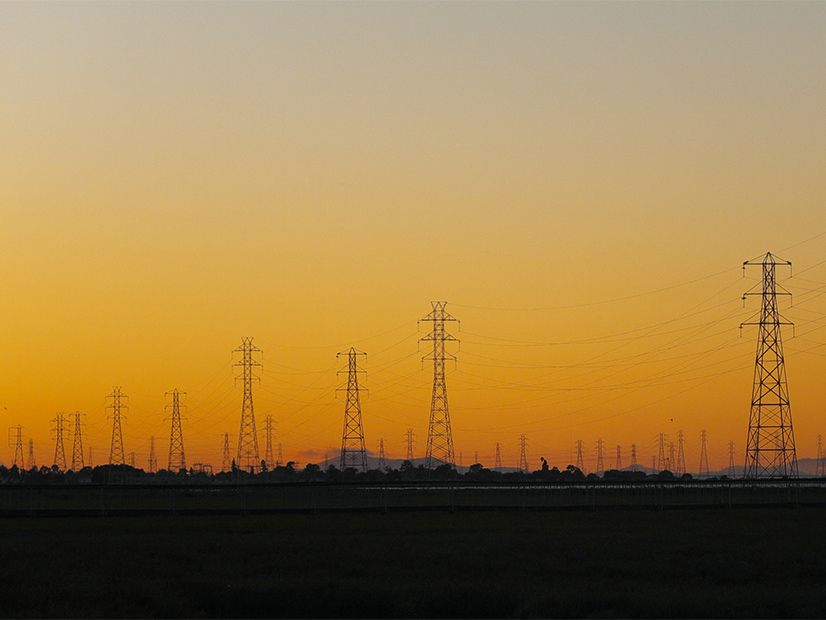Grid-enhancing technologies (GETs) can help open space on the electric grid to interconnect additional renewables more quickly than building new transmission, industry experts said during a webinar Monday.
The American Council on Renewable Energy and the WATT Coalition hosted the webinar, which was moderated by RTO Insider Editor-in-Chief Rich Heidorn, Jr.
Dynamic line ratings, advanced power controls and topology optimization software can all help wring the maximum performance of transmission lines, reducing both congestion and renewable curtailments, said WATT Coalition Executive Director Julia Selker.
Transmission capacity is currently based on a line’s static rating, which assumes a hot day with low wind speed. But dynamic line ratings (DLRs) take into consideration actual conditions, which results in higher line capacity about 85% of the time. In winter, dynamic line ratings add from 9% to 33% more capacity, while summer capacities can increase by 26% to 36%.
DLRs can also inform operators when a line is overstressed and they should reduce power below its static rating, Selker said.
FERC Order 881, issued in 2021, requires grid operators to adopt use of ambient adjusted line ratings, which factor in temperatures and time of day.
“But, really, windspeed and other factors are a big deal,” Selker said. “And one study of DLR versus ambient adjusted ratings in Texas showed that DLR had twice the value for climate and cost savings.”
Advanced power flow technologies are added to substations and give operators the ability to send power over specific transmission lines, thus minimizing congestion and curtailments, she added.
Topology optimization is software that examines where generation and load are on the grid at each moment and develops the best solution to minimize congestion, said Selker.
Transmission congestion costs reached $13 billion in 2021, based on reports from the nation’s grid operators.
“We think grid-enhancing technologies can reduce that congestion impact significantly, maybe 30% or so,” Selker said.
High costs for required transmission upgrades often force generation developers to withdraw their proposal altogether as they become uneconomic, said Arash Ghodsian, Invenergy vice president of transmission and policy.
“The queue sizes are significantly growing and, you know, there’s the optics of having speculative projects in the queue,” he said. “While that may be true, we’ve also seen many areas in the queue processes across the country where overloads could have been addressed by implementing grid-enhancing technology applications to reduce congestion and improve reliability.”
Invenergy has seen instances when generation projects lead to a 3% overload of a transmission line, requiring developers to pay as much as $50 million to build out new lines, while DLRs or other GETs would have fixed the issue entirely at a fraction of the cost, said Ghodsian.
While centrally planned lines can take years to build, GETs can be added in the meantime so that renewable development does not need to come to a halt waiting for new transmission to be built, he said.
Cheap, Quick
GETs can help ensure development of the kind of strong grid needed to decarbonize the power industry affordably and reliably, Minnesota Public Utilities Commissioner Matt Schuerger said.
“Planning is underway for new transmission, but clearly development, permitting, and construction takes time,” Schuerger said.
Ratepayers have paid for transmission lines, which should be used to their fullest extent even though significant new transmission must be built, he added.
EDF Renewables Senior Director of Transmission Policy Temujin Roach said the main thing that GETs do is to cut congestion, and while no grid will ever be gold-plated enough to eliminate congestion, reducing it provides major benefits for customers.
MISO has experienced significant congestion, which is expected to continue to grow. High natural gas prices have contributed to the recent rise in congestion, but even if those costs drop, GETs would still benefit consumers, Roach said. But proposals to use the new technologies have met with skepticism from utility employees who want to operate their systems more conservatively.
“We get a lot of pushback from transmission owners that don’t understand it and see it as a deconstruction of the system and get uncomfortable and concerned about that,” Roach said.
While GETs represent promising technologies that have been discussed for years, they have only seen limited use in this country, which varies significantly by region.
“The WATT Coalition sees an incentive misalignment as one of the primary issues,” said Selker. “Transmission owners today — their business model is about return on equity. It’s about building big transmission projects and getting a return on those large expenditures, and GETS just don’t really fit in that model. They’re cheap, they’re quick, they don’t make a substantial difference on that balance sheet.”



